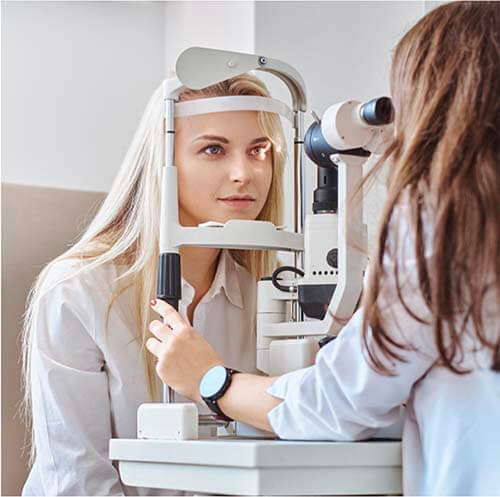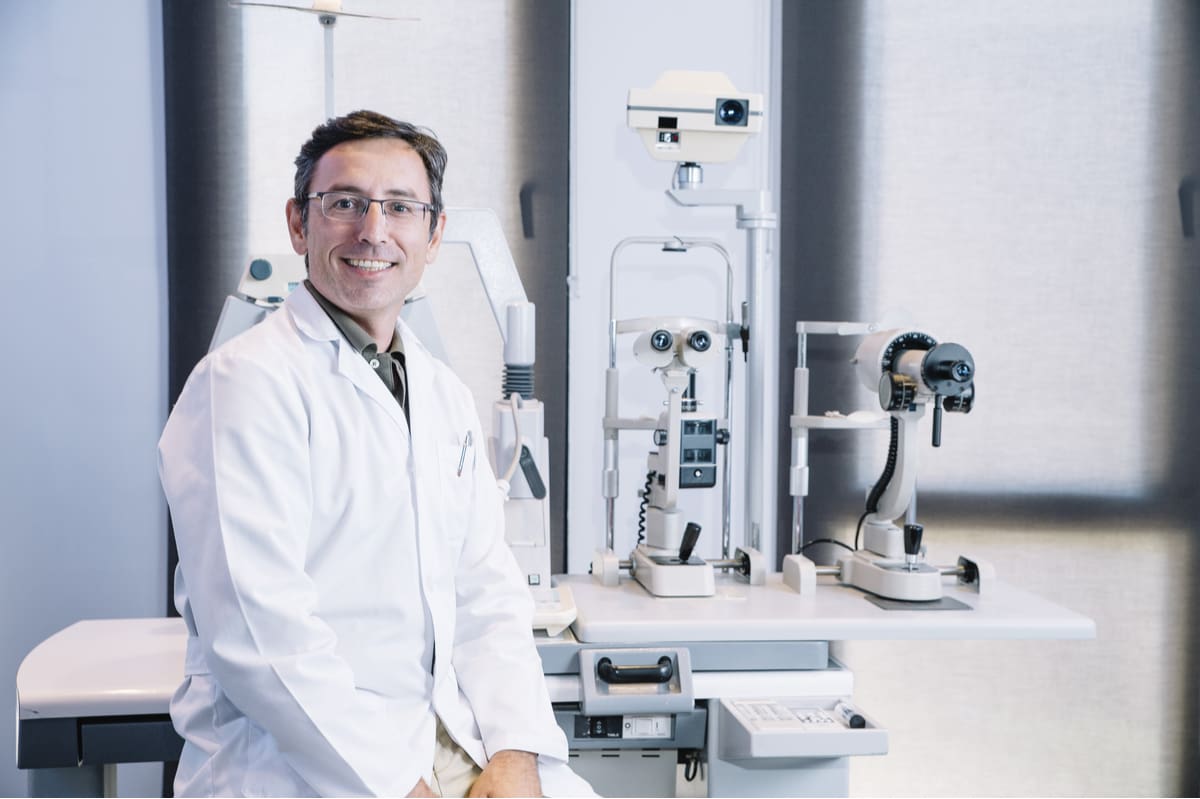Locate a Caring Eye Doctor Optometrist in Riverside for Your Family
Locate a Caring Eye Doctor Optometrist in Riverside for Your Family
Blog Article
The Comprehensive Eye Exam: What to Anticipate During Your Visit to the Eye Physician
A browse through to the eye medical professional for a detailed eye exam is more than a regular examination; it is a vital action in safeguarding your aesthetic health and wellness. What exactly takes place throughout the eye health analysis, and exactly how does it influence the prescription procedure?
Initial Appointment
The initial examination during an eye exam works as a critical structure for understanding a person's aesthetic health and wellness needs. This stage establishes the tone for the whole assessment process, allowing the optometrist to collect vital details regarding the client's case history, way of life, and particular vision problems. By carefully assessing any type of pre-existing conditions, medicines, or previous surgeries, the eye care specialist can tailor the assessment to resolve private requirements properly.

Additionally, the preliminary consultation is a possibility for patients to voice any type of concerns or issues, fostering a collaborative relationship with their doctor. This interaction not just makes certain that the person feels informed and comfy but likewise encourages them to get involved actively in their eye health administration. Jointly, these discussions allow the optometrist to devise a customized examination plan, ensuring optimal treatment and accurate diagnosis.
Visual Skill Test
Beginning the core parts of an eye assessment, the visual acuity test is designed to assess the sharpness and quality of a client's vision. This important evaluation assists figure out how well an individual can recognize letters or symbols at a standard distance, commonly utilizing a Snellen graph (Eye Doctor Optometrist). The chart consists of rows of letters that decrease in dimension from top to base, with the client placed at a popular distance of 20 feet
During the test, the individual is asked to cover one eye and check out aloud the smallest line of letters they can see clearly. This procedure is duplicated for the other eye. The results are taped as a portion, with 20/20 vision indicating regular visual acuity-- where the client can see at 20 feet what an individual with normal vision can see at that distance.
The visual acuity examination likewise recognizes possible refractive mistakes such as hyperopia, astigmatism, or nearsightedness, which might demand corrective lenses. By establishing a baseline of aesthetic efficiency, the test is an important analysis device that helps the eye treatment expert in creating an appropriate treatment plan tailored to the individual's one-of-a-kind aesthetic demands.
Eye Wellness Assessment
Following the visual acuity examination, a thorough eye health assessment is conducted to ensure the general health of the eyes. This critical sector of the eye examination includes a thorough evaluation of both the interior and external structures of the eye. The ophthalmologist or eye doctor begins by taking a look at the eyelids, cornea, conjunctiva, and sclera for any indications of infection, inflammation, or abnormalities. Using specialized tools like a slit light, the specialist gets an amplified view of the eye's makeup, making it possible for in-depth evaluation.
Via the use of ophthalmoscopy or fundus digital photography, the retina, optic nerve, and blood vessels are carefully reviewed. In many situations, student expansion is executed to enhance exposure of the inner eye frameworks, although this may result in momentary light level of sensitivity for the patient.
In addition, intraocular pressure is determined to evaluate for glaucoma threat. This is generally done making use of tonometry, which can discover raised pressure levels that Click Here may recommend possible damages to the optic nerve. Jointly, these assessments create a thorough evaluation to keep ocular health.
Refraction and Prescription
Exactly how does one guarantee ideal vision? A crucial action depends on the process of refraction and getting an accurate prescription. Refraction is an advanced procedure carried out by eye care professionals to identify the exact lens power needed to correct refractive mistakes such as myopia, presbyopia, astigmatism, and hyperopia. The objective of this procedure is to evaluate how light bends as it travels through the eye, enabling the specialist to establish whether rehabilitative lenses are essential for boosted aesthetic acuity.
During the refraction process, the client is asked to look via a phoropter, a gadget which contains numerous lenses. The practitioner will systematically change these lenses and ask the individual to compare quality in between options up until the best feasible vision is attained. This procedure is essential in crafting a precise prescription that defines the proper lens power for eyeglasses or contact lenses.
The prescription stemmed from this treatment not just enhances vision but additionally offers as a foundation for choosing ideal restorative eyeglasses. It is essential to make certain that prescriptions are on a regular basis upgraded, as changes in vision can happen over time, emphasizing the value of routine eye examinations. This thorough attention to detail assists maintain clear, comfortable vision in everyday life.
Follow-Up Suggestions

Throughout a follow-up visit, the eye medical professional will certainly perform a collection of tests to review visual skill and look for any changes in vision that could require an upgrade to the prescription. Furthermore, the follow-up provides an opportunity to discuss any kind of pain or concerns experienced with current eyewear. Adjustments can be made to guarantee convenience and efficacy, whether through lens modification or frame modifications.
For people with recurring problems such as glaucoma, diabetes-related eye problems, or macular degeneration, more frequent follow-ups may be essential. These visits are essential for taking care of and potentially reducing the development of eye disease. Adhering to these recommendations can considerably add to maintaining visual health and wellness and preventing lasting problems.
Conclusion
The extensive eye examination is an important process for keeping visual wellness, including a comprehensive evaluation of clinical history and vision problems. Secret components include the aesthetic skill examination, which evaluates sight clarity, and the eye wellness analysis, which examines the overall condition of the eyes.
A check out to the eye physician for a thorough eye exam is even more than a regular exam; it is an essential step in guarding your aesthetic wellness.Kicking off the core components of an eye examination, the visual skill examination is developed to examine the sharpness and clearness of a client's vision.Complying with the visual acuity test, a comprehensive eye health assessment is conducted to ensure the total well-being of the eyes. These gos to enable the eye treatment expert to keep track of changes in vision, update prescriptions, and analyze the overall visit site wellness of the eyes. Key parts include the visual skill test, which reviews sight clearness, and the eye health and wellness evaluation, which checks out the overall condition of the eyes.
Report this page